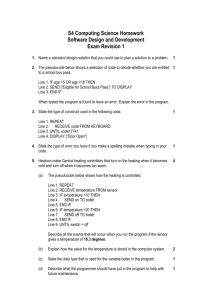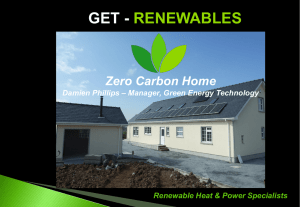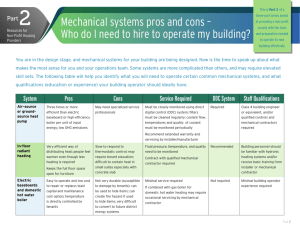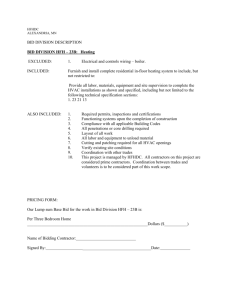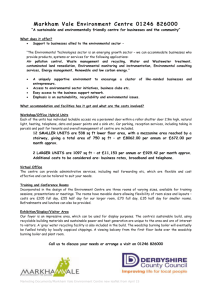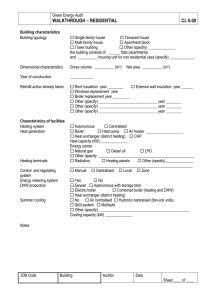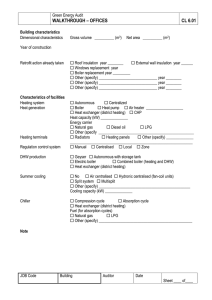Tips to save Energy in your home Turn off lights when you leave the
advertisement
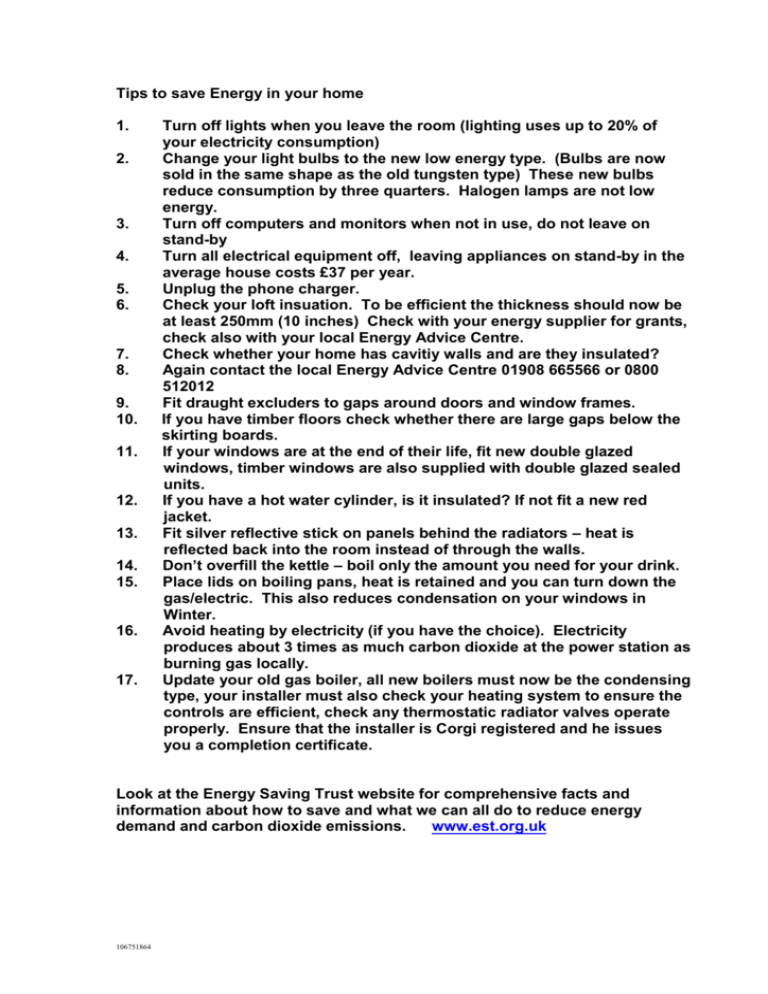
Tips to save Energy in your home 1. 2. 3. 4. 5. 6. 7. 8. 9. 10. 11. 12. 13. 14. 15. 16. 17. Turn off lights when you leave the room (lighting uses up to 20% of your electricity consumption) Change your light bulbs to the new low energy type. (Bulbs are now sold in the same shape as the old tungsten type) These new bulbs reduce consumption by three quarters. Halogen lamps are not low energy. Turn off computers and monitors when not in use, do not leave on stand-by Turn all electrical equipment off, leaving appliances on stand-by in the average house costs £37 per year. Unplug the phone charger. Check your loft insuation. To be efficient the thickness should now be at least 250mm (10 inches) Check with your energy supplier for grants, check also with your local Energy Advice Centre. Check whether your home has cavitiy walls and are they insulated? Again contact the local Energy Advice Centre 01908 665566 or 0800 512012 Fit draught excluders to gaps around doors and window frames. If you have timber floors check whether there are large gaps below the skirting boards. If your windows are at the end of their life, fit new double glazed windows, timber windows are also supplied with double glazed sealed units. If you have a hot water cylinder, is it insulated? If not fit a new red jacket. Fit silver reflective stick on panels behind the radiators – heat is reflected back into the room instead of through the walls. Don’t overfill the kettle – boil only the amount you need for your drink. Place lids on boiling pans, heat is retained and you can turn down the gas/electric. This also reduces condensation on your windows in Winter. Avoid heating by electricity (if you have the choice). Electricity produces about 3 times as much carbon dioxide at the power station as burning gas locally. Update your old gas boiler, all new boilers must now be the condensing type, your installer must also check your heating system to ensure the controls are efficient, check any thermostatic radiator valves operate properly. Ensure that the installer is Corgi registered and he issues you a completion certificate. Look at the Energy Saving Trust website for comprehensive facts and information about how to save and what we can all do to reduce energy demand and carbon dioxide emissions. www.est.org.uk 106751864 Tips to save at the workplace 1. Turn off lights when not needed, on a bright day do you need all the lights on? 2. Upgrade old fluorescent tubes to slim low energy type T5 or T8’s. The old T12 (1.5 inch diameter tubes use twice as much power than the modern T5) 3. Turn off printers and copiers at the end of the day 4. Turn off your computer when leaving the office – don’t leave any equipment on stand-by. 5. Check the offices are not over heated. 6. Arrange for a survey of your premises by an experienced energy engineer. 7. They will identify where energy is used and wasted. Typical improvements are:8. Update your heating boiler to a modern condensing type. 9. Update the boiler controls to modern optimiser control – these compensate for the weather temperature and reduce waste. 10. Increase insulation - you may have cavity walls that are uninsulated. 11. Insulate hot water tanks and all pipework in the boiler room. 12. Nominate one person in the workplace to be the Energy Champion. 13. Draw up an Energy Policy for your company, include targets to save energy and water. 14. Nominate someone to read the meters and see how much is used every week. 15. Consider “Smart metering”, devices can be fitted to your electricity, gas and water meter to automatically read the consumption and show how much is being used by day and night. Typical faults found are water leaks, gas heating coming on in the middle of the night caused by incorrect heating control settings, equipment coming on at weekends. Check out the Carbon Trust website for good information, help with surveys and contacts. www.carbontrust.co.uk 0800 085 2005 106751864


